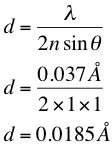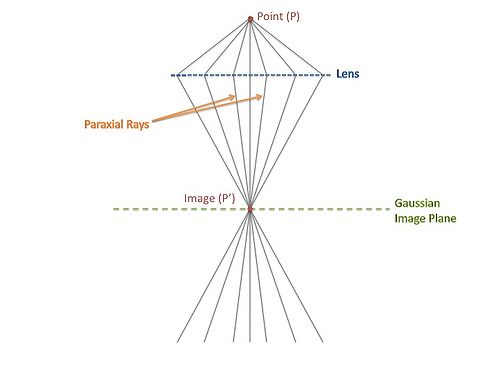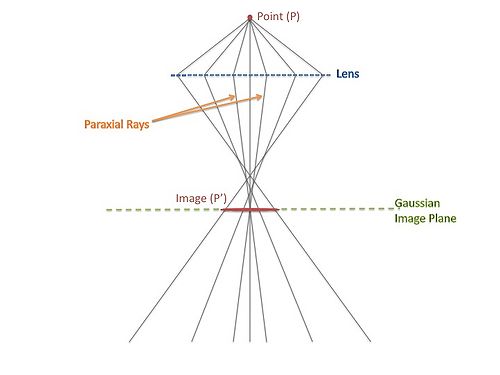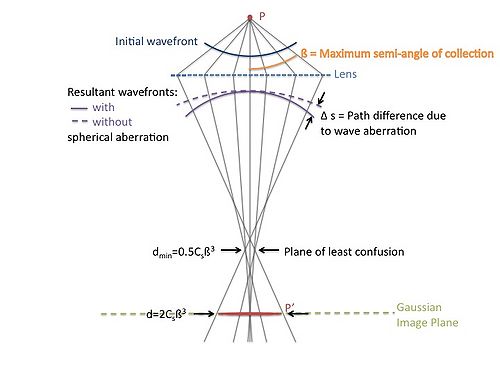Aberrations
Considering merely the de Broglie wavelength of electrons accelerated at 100kV (a common accelerating voltage for biological-EM), the electron microscope performs dismally compared to how it theoretically could. The wavelength for such and electron is 0.037Å. The theoretical minimum separation, d, that could be resolved with this wavelength is thus (from Bragg's law):
Where n is the refractive index of the vacuum (which is equal to 1); sinθ is equal to 1, since the numerical aperture for an electron microscope is very narrow.
However, electromagnetic lens aberrations, particularly from the objective lens, ultimately limit the resolution of the microscope. The typical resolution limit reported for TEM is only about 1 angstrom (about 100 times worse than the theoretical limit).
Contents
Spherical Aberration
The electromagnetic lenses in the EM have a stronger magnetic field toward the outside of the lens. This means that the further off axis an electron is traveling, the more strongly it is bent back to the axis. This causes what begins as a point in the object to become a disc in the image.



